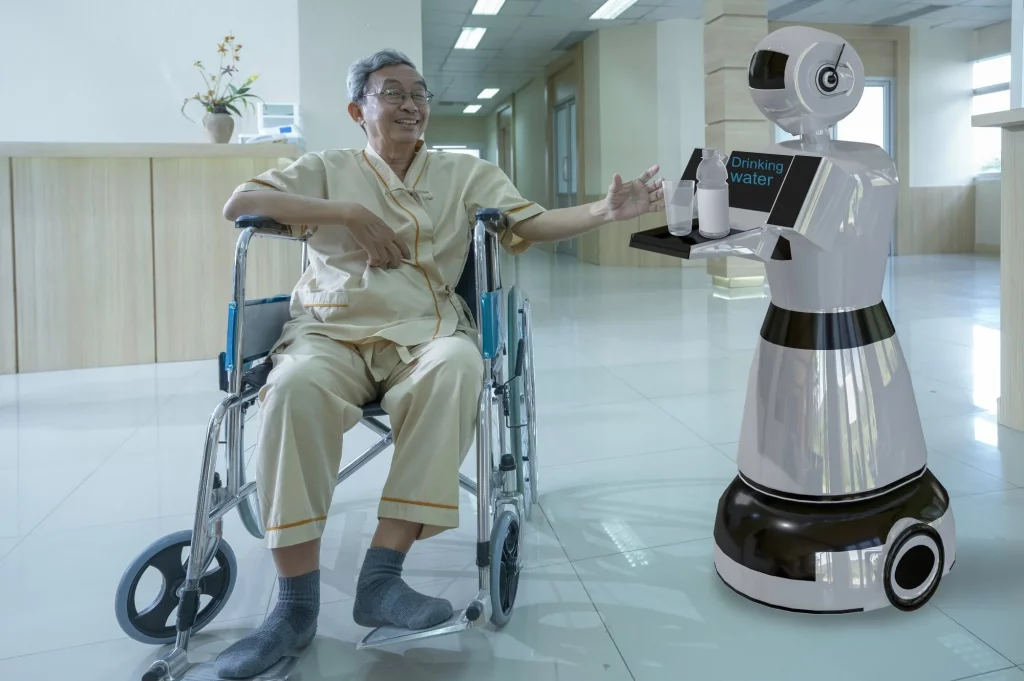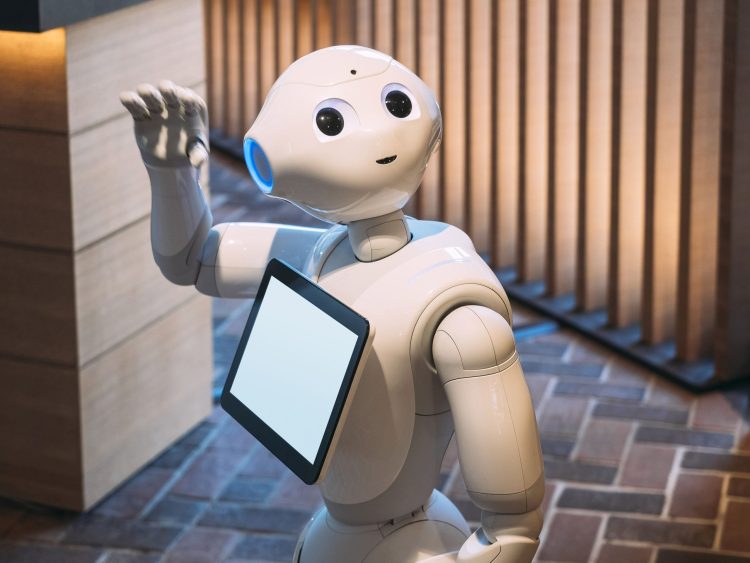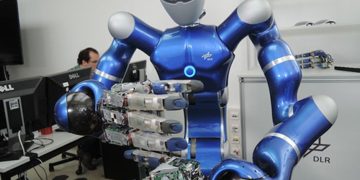They roll across hotel lobbies, glide through hospital corridors, hum softly in kitchens, and tidy up our living rooms while we sleep. Service robots—the quiet, tireless assistants of modern life—have become so deeply embedded in our daily routines that we barely notice their presence anymore. They are the invisible helpers of the 21st century, transforming how we live, work, and interact with the world around us.
Just a decade ago, robots were still viewed as futuristic gadgets—symbols of a coming age. Today, they mop floors, deliver meals, carry medications, guide travelers through airports, and even offer companionship to the elderly. In homes, hospitals, hotels, and public spaces, service robots are redefining what “help” means. Their rise is not loud or dramatic—it is quiet, gradual, and profoundly transformative.
The Domestic Revolution: Robots at Home
The home is the most intimate environment in human life, and it is also where the robotics revolution began to take root. When the first robotic vacuum cleaner—the iRobot Roomba—appeared in 2002, it seemed like a novelty. But that little disk with sensors and wheels started something much bigger. Today, domestic robots handle an expanding range of household chores: vacuuming, mopping, lawn mowing, window cleaning, and even cooking.
Smart cleaning robots now use AI-powered mapping systems to learn the layout of your home, recognize obstacles, and optimize their cleaning routes. Some can even be programmed through smartphones or voice commands. The latest generation of kitchen robots can slice vegetables, stir sauces, and prepare entire meals with astonishing precision.
Take Japan’s “Cooking Partner,” a humanoid kitchen assistant capable of flipping pancakes, frying eggs, and even plating dishes. In the United States, companies like Moley Robotics are developing fully automated kitchens where robotic arms can replicate the movements of professional chefs.
The appeal is obvious: time and effort saved, consistency ensured, and, in many cases, accessibility improved for those who have disabilities or limited mobility. But there is also something deeper happening. These household robots are subtly shifting the emotional and cultural meaning of “home.” Tasks once associated with human care—like cleaning or cooking—are being redefined as shared responsibilities between humans and intelligent machines.
Hospitality Reimagined: Robots in Hotels and Restaurants
Walk into a modern hotel in Tokyo, Singapore, or Dubai, and you might be greeted not by a human receptionist, but by a friendly robot. At Japan’s famous Henn-na Hotel, humanoid robots check guests in, carry luggage, and even provide room service. These robots can speak multiple languages, recognize facial expressions, and handle basic customer requests—all without fatigue or error.
In restaurants, robots are moving from novelty to necessity. The COVID-19 pandemic accelerated the adoption of contactless service, and robots stepped in to fill labor shortages while minimizing physical contact. From robot waiters in Shanghai and Seoul to coffee-serving robots in San Francisco, automation has become part of the dining experience.
In many Asian cities, delivery robots now carry food from kitchens to tables, navigating crowds with sensors and cameras. In the U.S., chains like Chipotle and White Castle have experimented with “Flippy,” a robotic arm that fries burgers and prepares fries faster than any human worker.
While some customers initially found robotic service strange, many now find it charming—or even reassuring. Robots do not forget orders, they never tire, and they can operate 24/7. Yet, their growing presence also raises subtle social questions: What happens when the warmth of human service is replaced by efficient, polite algorithms? Can a smile programmed into a machine ever feel truly sincere?
Caring Machines: Robots in Healthcare and Elderly Support
Perhaps nowhere are service robots having a greater emotional and social impact than in healthcare. Hospitals, overwhelmed by patient demands and staff shortages, are turning to robots to help with logistics, cleaning, and even patient care.
In South Korea and China, hospitals employ delivery robots that transport medicine, food, and medical supplies between departments. These machines use sensors and mapping systems to navigate busy hallways, freeing nurses and doctors to focus on patients rather than routine errands. In operating rooms, robotic arms assist surgeons with delicate procedures, offering precision that even the steadiest human hand cannot match.
But the most transformative aspect of robotics in healthcare lies in elderly care and companionship. With populations aging rapidly, particularly in Japan and Europe, millions of people live alone or in assisted care facilities. For them, loneliness can be as dangerous as illness itself.
Enter robots like Paro, the soft, seal-shaped companion robot that responds to touch and sound. Designed for dementia patients, Paro can blink, move, and make gentle noises, offering comfort and reducing stress. In Japan, the humanoid robot Pepper serves as a friendly social companion in nursing homes, engaging residents in conversations, exercise routines, and games.
In the U.S. and Europe, startups are developing robots that monitor vital signs, remind patients to take medication, and even alert caregivers in emergencies. For example, ElliQ—a sleek, voice-interactive robot for seniors—uses AI to track health patterns and offer companionship, all while maintaining privacy and dignity.
These caregiving robots are more than machines—they represent a profound emotional evolution in human-robot relationships. They are designed not just to serve but to connect. And in doing so, they challenge our understanding of empathy and companionship.
Invisible Infrastructure: Robots in Public and Urban Services
Beyond homes and hospitals, service robots are quietly shaping the public spaces we move through every day. In airports, robots help passengers find their gates or deliver small items. In shopping malls, they provide information or guide visitors. In cities like Singapore and Dubai, robotic street cleaners patrol sidewalks at night, sweeping debris and disinfecting surfaces.
These robots form what urban planners call “invisible infrastructure”—a layer of intelligent, autonomous systems that maintain and manage the modern city. In logistics hubs, robotic vehicles transport goods across warehouses. In public libraries, robots restock shelves. Even in agriculture, autonomous drones monitor crops while robotic pickers harvest fruit.
For many people, these robots are invisible not because they are hard to see, but because they blend seamlessly into the rhythm of daily life. The trash is collected, the floors are spotless, the deliveries arrive on time—and few stop to wonder who, or what, made it all happen.Retail and Customer Service: The New Face of Everyday Interaction
If the home is where robots quietly serve, and hospitals are where they heal, then retail is where they interact. The retail sector is one of the fastest adopters of service robotics because it sits at the intersection of logistics, marketing, and human contact.
Walk into a modern supermarket in Tokyo or Seoul, and you might meet a friendly robot greeter. It waves, offers product recommendations, or helps you locate items. These are not gimmicks anymore—they are part of a growing ecosystem designed to enhance customer experience and collect useful data.
At convenience stores, robots can restock shelves, clean aisles, and monitor inventory levels in real time. Walmart, for instance, has used autonomous shelf-scanning robots to identify missing or misplaced products. In airports and shopping malls, robots like Temi or KettyBot can guide visitors to specific stores or deliver small items.
Beyond efficiency, service robots in retail create a new kind of human-machine dialogue. They can remember returning customers, offer personalized greetings, and even adjust their tone based on emotion detection. For many shoppers, especially younger generations raised in a digital world, these interactions are no longer uncanny—they’re natural extensions of technology’s presence in daily life.
Yet, this also raises subtle concerns about privacy and authenticity. When a robot recommends a product, is it acting in your best interest, or simply following a corporate algorithm? When it recognizes your face, where is that data stored? The convenience of robotic service inevitably invites deeper questions about trust in a world mediated by intelligent systems.

Robots in Education: From Assistants to Mentors
Another sphere where service robots are quietly revolutionizing human experience is education. Robots are now teachers, tutors, and companions for students of all ages—from preschoolers to college learners.
In South Korea and Singapore, schools use robots like Engkey and Albert to teach English pronunciation. These robots can interact in real time, adapt to a student’s skill level, and offer encouragement through expressive digital faces. The results are remarkable: children engage more actively, and teachers can focus on creativity rather than repetition.
In higher education, robots are being used for lab instruction, technical demonstrations, and even student counseling. For example, at some universities in China and Europe, robot assistants guide students through complex engineering tasks, offering instant feedback and reducing the workload of professors.
Robots also play a growing role in special education, supporting students with autism or learning disabilities. By providing consistent, predictable interactions, these robots help children build communication and emotional regulation skills.
The deeper shift here is philosophical: education is moving from information transfer to co-learning—a process where both human and machine evolve through interaction. The classroom of the future may not be centered around a single teacher, but around a dynamic network of humans and intelligent systems learning together.
Robots in Public Safety and Crisis Response
While most service robots work in safe, predictable environments, others are designed for the most dangerous and unpredictable conditions imaginable. In disaster zones, robots are increasingly deployed as first responders—searching for survivors, assessing structural damage, or delivering supplies when humans cannot safely enter.
After earthquakes in Japan and Turkey, robotic dogs and drones were used to explore collapsed buildings, mapping areas in 3D and detecting human body heat. In firefighting, robots equipped with thermal cameras can enter burning buildings to locate trapped victims or shut down gas valves.
During the COVID-19 pandemic, service robots became critical to maintaining public safety. They delivered medicine to quarantined patients, disinfected public spaces, and even broadcast safety messages in city streets. These efforts demonstrated how robots could serve society not only in comfort but also in crisis.
In law enforcement, some police departments now deploy patrol robots that can monitor areas, detect unusual behavior, and alert human officers. While still controversial, these systems raise profound ethical questions: Can a robot enforce the law fairly? Should it be allowed to make decisions that affect human freedom or safety?
The Social and Ethical Dimension
The rise of service robots is not just a technical or economic story—it is deeply social. Robots are changing how people perceive labor, empathy, and identity.
When a robot cleans your floor or delivers your meal, it performs a task that used to symbolize human effort and service. Some argue that this automation liberates people from drudgery, giving them more time for creativity and leisure. Others worry it devalues human work, replacing connection with convenience.
Ethically, the question becomes: how much intimacy should we share with machines? Elderly people who bond with companion robots, or children who name their educational robots, show that emotional attachment to machines is real. But can a robot truly care? Or does it only simulate caring through algorithms trained to detect and mimic human behavior?
Philosophers and technologists increasingly refer to this as the “empathy paradox.” Robots designed to offer comfort can also create illusions of understanding. In the long term, societies must decide whether such illusions are acceptable—or even beneficial—if they improve emotional well-being.
There are also urgent concerns about labor and inequality. Service robots often enter industries already under economic pressure, like hospitality or retail. Automation can displace low-income workers unless paired with reskilling and new employment models. The challenge is not whether robots will take over jobs, but whether societies can adapt quickly enough to create new kinds of work that complement, rather than compete with, machines.
The Symbiosis of the Future
In the near future, service robots will become as common—and as invisible—as electricity or Wi-Fi. They will clean, deliver, assist, and monitor without fanfare, blending into the rhythm of human life.
But the most important evolution will not be technical—it will be relational. Humans and robots are learning to coexist in a shared social ecosystem. Robots are learning to understand us—not just through words, but through patterns, moods, and intentions. And we, in turn, are learning to design, guide, and empathize with machines.
This relationship is not about replacing humans but extending what it means to be human. By delegating routine labor, we free space for creativity, empathy, and imagination. By designing intelligent assistants, we mirror our own desire to nurture and cooperate.
In this sense, the service robots quietly humming in our kitchens and hospitals are not just tools of convenience—they are reflections of ourselves. They embody the human aspiration to build helpers, companions, and caretakers that make life richer, safer, and more connected.
As we step deeper into an age of invisible helpers, one truth becomes clear: the future of service robotics is not about machines serving humans—it’s about humans and machines serving life together.












































